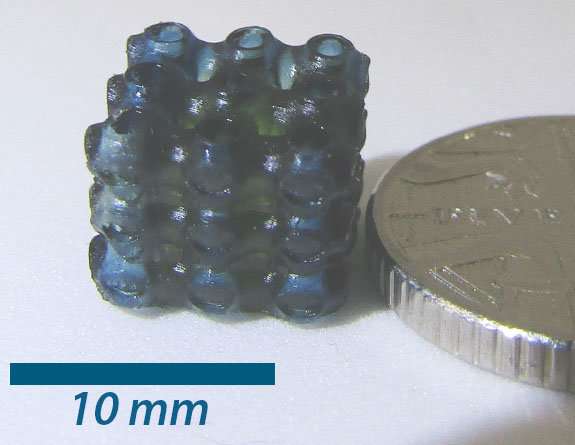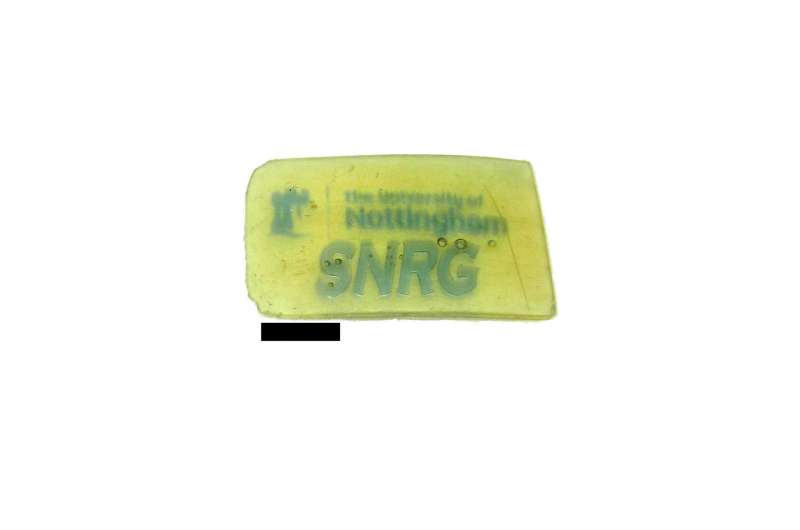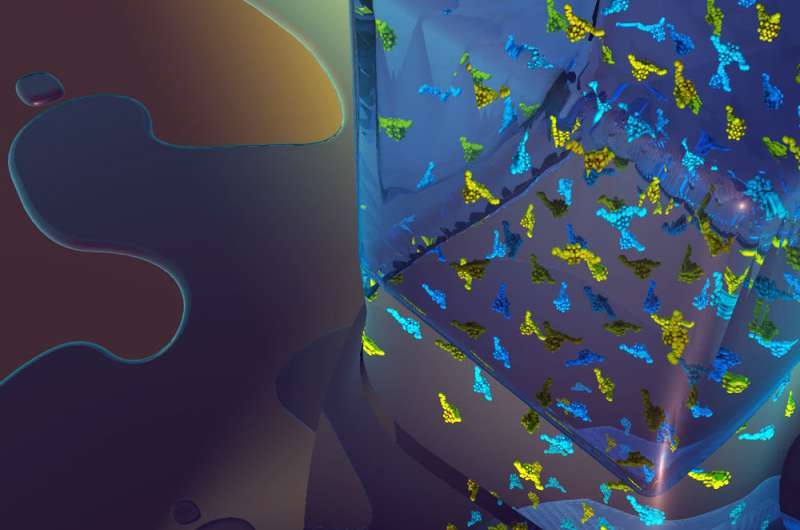Game-changing finding pushes 3-D printing to the molecular limit

New University of Nottingham research proves that advanced materials containing molecules that switch states in response to environmental stimuli such as light can be fabricated using 3-D printing.
The study findings have the potential to vastly increase the functional capabilities of 3-D-printed devices for industries such as electronics, healthcare and quantum computing.
The research, led by Dr. Victor Sans Sangorrin from the Faculty of Engineering and Dr. Graham Newton from the School of Chemistry, is published in the academic journal, Advanced Materials.
"This bottom-up approach to device fabrication will push the boundaries of additive manufacturing like never before. Using a unique integrated design approach, we have demonstrated functional synergy between photochromic molecules and polymers in a fully 3-D-printed device. Our approach expands the toolbox of advanced materials available to engineers developing devices for real-world problems," explains Dr. Sans.

To demonstrate their concept, the team developed a photoactive molecule that changes from colourless to blue when irradiated with light. The colour change can then be reversed by exposure to oxygen from the air.
The researchers then 3-D-printed composite materials by combining the photoactive molecules with a tailor-made polymer, yielding a new material that can store information reversibly.

Dr. Newton, said: "We can now take any molecules that change properties upon exposure to light and print them into composites with almost any shape or size. In theory, it would be possible to reversibly encode something quite complex like a QR code or a barcode, and then wipe the material clean, almost like cleaning a whiteboard with an eraser. While our devices currently operate using colour changes, this approach could be used to develop materials for energy storage and electronics."
More information: Dominic J. Wales et al. 3D-Printable Photochromic Molecular Materials for Reversible Information Storage, Advanced Materials (2018). DOI: 10.1002/adma.201800159
Journal information: Advanced Materials
Provided by University of Nottingham




















